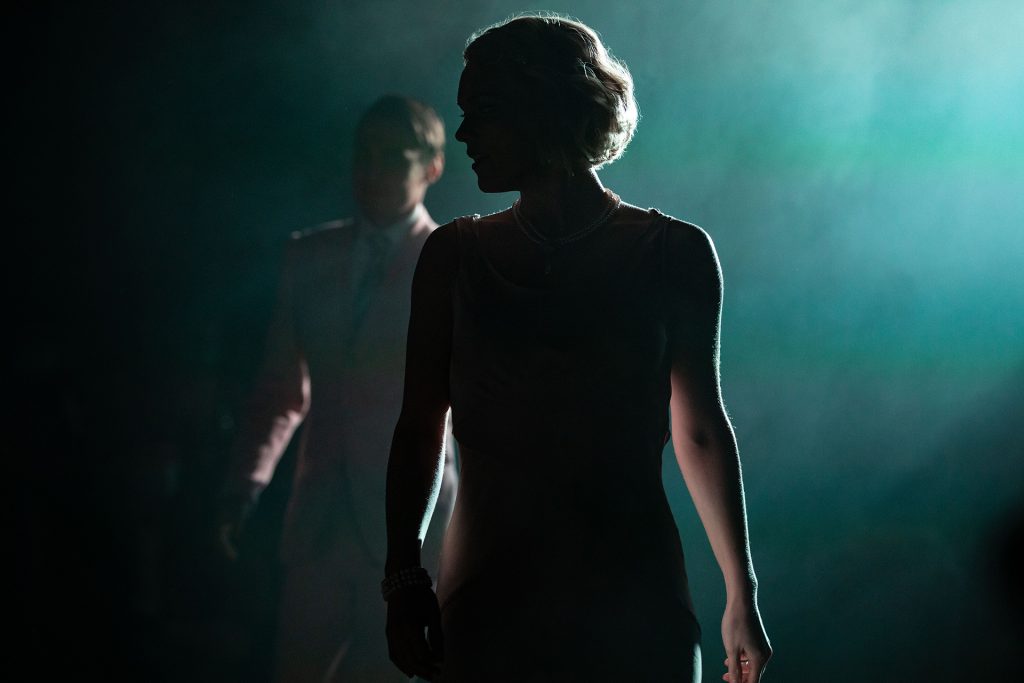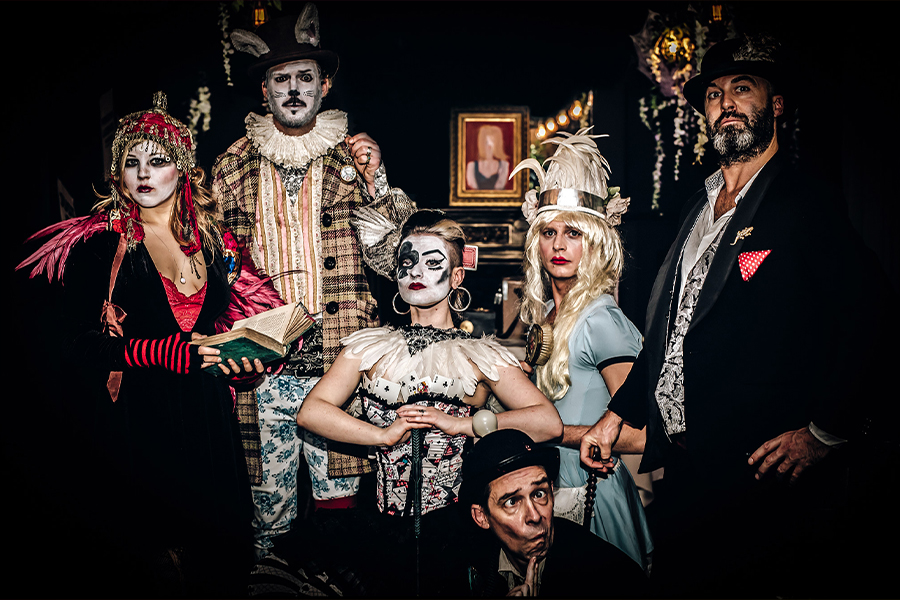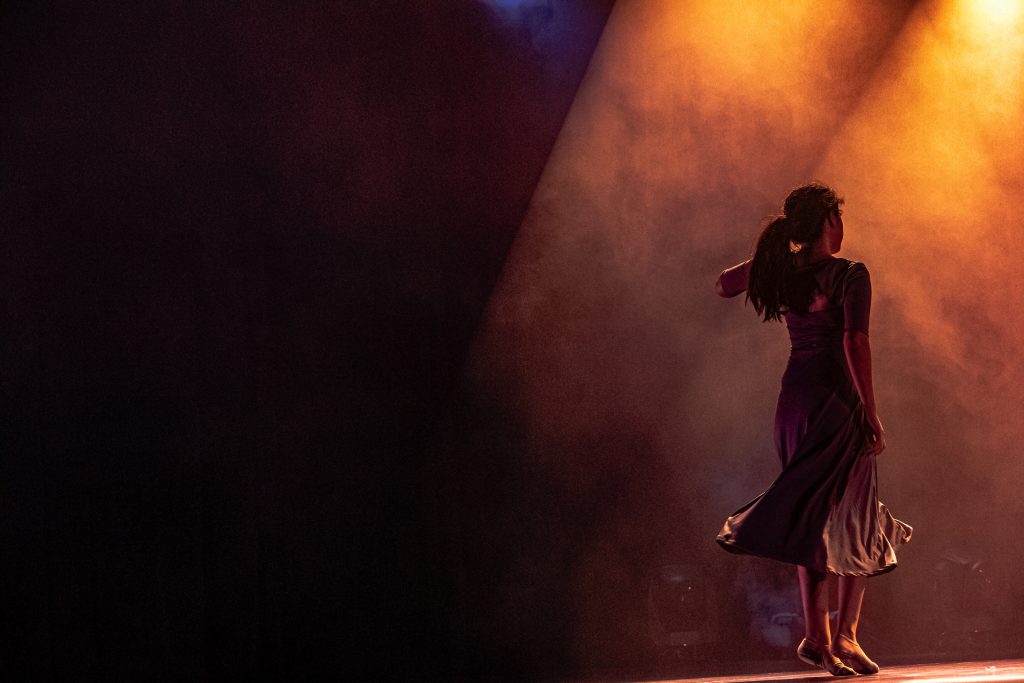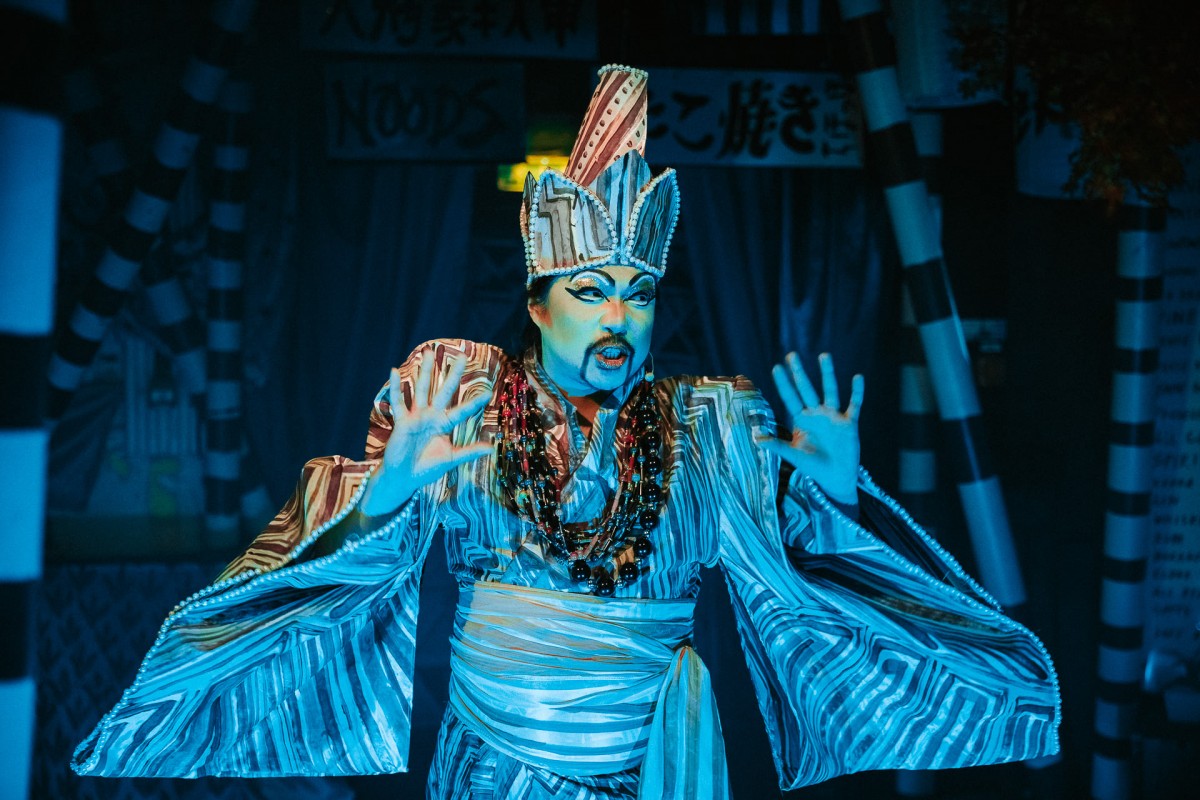Do you want to create true intimacy in your experiences?
Intimacy depends on a few elements being present – trust, care and belonging chief among them. If we want to invite audiences to create our experiences with us, we first have to grant them the agency and safety from which such intimacy arises.
Co-creation might be the bedrock of an immersive experience, but the relationship between performer/experience stager and audience has to be managed carefully in order to grant this agency on both sides. So how can we navigate this tricky path?
Joanna Bucknall is a lecturer in Modern and Contemporary Drama at the University of Birmingham and Theatre, Artistic Director of Vertical Exchange Performance Collective (VEX), and the host of the Talking About Immersive Theatre podcast. She’s also one of the first people we know to get a PhD in Immersive Theatre back in 2006.
Bucknall makes work that she calls “audience-centric, immediate, intimate and interactive”, often in the form of one-on-one and micro experiences. Even when the work has been scaled up to accommodate 100 guests, it remains small, intimate, and built on the same principles. Her practice explores the concept of “dialogical dramaturgy”: the creation of a two-way, dynamic and collaborative relationship through which an experience becomes manifest.
As experience designers everywhere experiment with ways to increase not only participation but also co-creation in their experiences, Bucknall thinks this dialogicality might be the key to ethical, consensual and care-driven audience participation and engagement. Here, she takes us through how to develop a dramaturgy of dialogicality and what it might look like in practice, drawing on examples from over 16 years’ work with VEX.
We’re still developing answers to the following questions, but dialogicality might help us to find a way in:
- How do we engage audiences to create something with us, rather than just step inside of what we create?
- How do we invite participants into an engagement with difficult thematics in a way that is consensual, ethical and agentive, but still has the potential to provoke, problematise and challenge?
- In other words, how do you get an audience to come to something challenging, but still make it fun?
- What do we owe our participants and how much are we accountable for their experience?
Let’s get intimate…
So, What Is Dialogical Dramaturgy?

“Dialogicality is heteroglossic, polyphonic, inter-animate and playful.”
Joanna Bucknall
Bucknall takes an academic approach to her practice – so let’s break down some of the terms she uses.
Dialogicality: the use of conversation or shared dialogue to explore the meaning of something. It’s a flat, not hierarchical, form of interaction with talking and discussion at its heart. It’s the opposition of monologicality, where all the information is given to someone without clarification or discussion. They may enter inside it, but have no chance to discuss or impact what happens.
Heteroglossic: when the dominant perspective or artistic vision is defamiliarised and the audience comes together to build the performance. There’s no creative genius given to the audience to inhabit: we make it with them. Their perspective informs the work, and also troubles our perspective – it exposes and shows us things about it. This process is undoubtedly interesting, but can also be scary and risky. When you open up an invitation, you have to relinquish control and replace it with care and ethics.
“In a situation of heteroglossia, the dominant perspective, or one’s own perspective, is itself defamiliarised. This happens because it is made visible from the perspectives of others, as well as one’s own.”
Andrew Robins, 2009
Heteroglossic engagement: an approach that ensures the performance is borne in and through the inter-animation of the multiple voices and perspectives that the participant is invited to contribute to, rather than just invited to access. It’s not just about making room for multiple voices in the performance, but more precisely it’s the activation of certain conditions that allow multiple acts to transpire between multiple performing bodies, collapsing the usual conditions of theatre.
Dramaturgy of dialogicality: the committing of a series of acts between audience and performer within a thematic performative frame. It might happen somewhere as everyday as the kitchen table or a café, but becomes something more as it sits within a frame that looks at a particular type of ritual. The acts, and thus the performance experience, arise out of the dialogic engagement of audience, performers, and the thematic and material conditions of the work.
“It does not exist beforehand. I might have a list of rituals and invitations going in, but beyond that the audience has to fill it up.”
Joanna Bucknall
The experience is entirely different every time, as people bring themselves with them. It becomes a holistic negotiation of frame, rituals, tasks, invitations, and gamification: a small group coming together to generate something under a set of provisions.
“A dramaturgy of dialogicality is a pregnant scenario: an empty vessel that the performance emerges out of through a series of acts/tasks/rituals or gamification.”
Joanna Bucknall
If the audience doesn’t fill the vessel up, there is no show! It therefore becomes a constant negotiation of positioning of self/selves in relation to themes, content and tasks. The audience has full agency, which makes it affective in a way traditional theatre can’t manage. Bucknall gives the example of a performance VEX did for Refugee Week where they put people inside the experience of applying for asylum and gamified it without losing sincerity, but still giving them a route in.
The Dialogical Structure: Invitation, Consent, Ritual

To bring life to these concepts, Bucknall takes us through the VEX show Calling You In / All Cried Out, which used the dialogical structure to create an ethical and consensual audience-driven experience.
Originally a 15-20-minute festival piece, this performance about miscarriage was a hybrid of binaural audio and live performance. The spaces for women to talk about their experiences of miscarriage are limited and traumatic, something that Bucknall has lived experience of.
“It wasn’t fictive: I was reframing the real as performance in order to explore it. It was more ethical to bring something that came from an autobiographical place.”
Joanna Bucknall
The performance was later extended to an hour and a half experience for two audience members to go through simultaneously, but both through different narrative tracks and ways of engaging.
They start in a medical facility having their stats taken, and then have to make a series of negotiations, getting consent, and choosing moments they want to respond to, eventually choosing either the track for “Her” or for “Him”. They then hear about each person’s experience of fertility, with opportunities to add their own story, ending up in a Wiccan or Viking ritual.
This dialogical structure happens repeatedly within the performance:
- Invitation/provocation
First, we invite them into the experience and make them feel comfortable. We might ask for their names, acknowledging the audience and what we’re doing. We build rapport the same way you would with a stranger: it takes 3 minutes of eye contact to make someone fall in love with you, and 1 minute for them to trust you. We use this to induct people into the performance.
- Consent sought
Sometimes asking for consent might be explicit, by telling the audience what you’re about to do and asking if they want to join. If not, they’re free to take their headphones off at any point and walk away into the night, and there should be people there to help them do this. At CYI / ACO, because the subject matter was so challenging Bucknall decided to explicitly ask for consent – for example, having a medical practitioner hold their hand and ask them if they’re ready to progress to the next room.
Other times, it might be built into the structure rather than being explicit. At Wishbox, for example, the performance took the shape of a wedding reception lasting between six and 24 hours, where an audience of 40 people could come and go as they pleased. Because of this fluidity, rather than giving them specific tasks the audience could choose from tasks built into the physical environment, making their consent was through action.
“Duration was a big part of Wishbox – the longer you do something for, the stranger it becomes, and the more it exposes the structures underneath.”
Joanna Bucknall
Either way, this asking for consent happens consistently throughout the performance – and each time is an opportunity to level up and go deeper.
- Task/ritual/ask
This ask can be something super simple. In another VEX performance, The Story of You & I, the first invitation is to have a cup of tea and choose whether you want green or black. The simple act of offering takes place, and you then engage in the ritual act of having tea together.
In Wishbox, even though the structures were more complicated and each new ask would trigger another, it was still built on the same, simple structure. Out of this cycle, the content of the performance is brought into being through collaboration.
Even though this collaboration might feel like you’re ceding control of the performance to the audience, this dialogicality still acts as a necessary structure so they know what to do.
“The more work I did for my PhD, I realised that the more freedom you give people, the more they freeze. Even though it’s dialogical, the performance is within a structure. A firm set of rules makes people feel much freer.
When you walk into a traditional theatre performance, you know what the social contract is and what to do. When you walk into immersive theatre, it’s a liminal space where the rules don’t apply – so you have to give them something. This is why we often start with a familiar setting or space, but problematise it and make it strange.”
Joanna Bucknall
Dialogicality is making space for negotiating and building an experience in collaboration with an audience. You are making something with them, not serving them something up. You’re building it with them and through them, creating new levels of intimacy and co-creation along the way.
Catharsis in the theatre is part of a massive structure that has to be reached in a specific way. At the end of each performance of CYI / ACO, people would tell Bucknall that they felt so much lighter because they had lived through it. This is using affective psychology as a way to understand certain human behaviours: letting someone live through something or engage in someone else’s perspective is potentially transformative, as you get the opportunity to not just understand someone else’s perspective, but also to live it for a time.
This could relate not only to personal transformation, but for wider issues. We have some huge challenges as human beings, and this kind of work could have a huge impact on changing behaviours.
Training Performers In Emotional Risk

To create intimacy involves a certain amount of risk. People have to trust you to follow you down the path, and we can never know the impact that decision will have on them. Particularly when it comes to training other performers to manage these risks, where do we begin?
As a performer, it’s our responsibility to recognise where someone might be uncomfortable, picking up on cues and developing a good intuition for when the boundaries might be pushed too far. (For more on getting feedback from your performers on how your audience might feel about your experience, check out Field Data From The Front Lines.)
When teaching others, we can build this intuition through testing the experience again and again, giving them the opportunity to see how audiences react. First test the structures and rules with each other, then swiftly bring people in. This takes a long time – much longer than the usual period of two weeks before a live show for traditional theatre. It usually takes eight weeks to get performers to the point where they feel comfortable with live audiences and can recognise if someone is struggling. This long research period might feel risky, but it minimises the risk of having a serious negative impact on your audience.
How To Scale The One-On-One Performance
How do we keep this ethical, intimate encounter but scale it up? As ever, we’re concerned with how we might scale these ideas to reach more people – not only so our experiences might have greater commercial impact, but also so that more people can experience the transformative and perspective-shifting benefits of this kind of work.
Although shows like Wishbox might show the potential to run a dialogical structure on a larger scale, this still only refers to 40 people. And in general, Bucknall has found that you lose some of the intimacy and agency when you attempt to scale up to bigger groups.
“The fundamentals of the one-on-one relationship are not scaleable.”
Joanna Bucknall
But might we be able to deliver the dialogical structure through technology or in a way that doesn’t require the performer to be in the space? How can you have multiple one-on-ones happening simultaneously? Bucknall references Project Perfect Stranger, a 5-day experience from the pandemic era that started over WhatsApp, then progressed to participants sharing pictures and video, and culminating in them having a live phone call. The performance was a vessel for audience members to have one-on-one experiences with each other.
“It was an example of hacking the familiar to put audiences and people together. And people are powerful when they’re connected.”
Joanna Bucknall
This also makes us think of Yannick Trapman-O’Brien’s work in The Telelibrary, where the audience gradually builds a library of recordings that future participants can interact with. Swamp Motel’s experience Saint Jude also used technology so that participants could have multiple one-on-one experiences simultaneously – not with a performer or each other, but with an AI that invites them to make choices throughout.
Finally, we’re all already living through a collective immersive experience right now: life itself. As creative director Julian Rad puts it:
“To go from an intimate gathering of 40 people to something like a Punchdrunk piece for 1,000 people to billions, we have to stop thinking about it as a singular experience and more like a festival or religion. What is modern organised religion if not a shared experiential piece passed through mythology, gamified with levels, rules and props?
This is what I call the Dark Arts of experience design: going beyond having an experience that affects one person, to growing a movement that changes the world.”
Julian Rad
The WXO Take-Out

Whether you’re creating an intimate, micro-experience that can only hold one person at a time, or a larger immersive experience that many people can pass through, Bucknall’s hard-won and tested ideas about the “dialogical structure” can help you create moments of agency and intimacy.
By following the three-step “invitation, consent, ritual” process, you can create micro-moments that can be laddered up to create an immersive experience that unfolds over many hours, amping up in emotional risk as it does.
And through testing and experience, you can develop the skills and intuition both as an experience creator and within your performers to know how and when to push the boundaries in order to enact transformation on a personal and collective scale
So next time you’re designing an experience, ask yourself:
- How do you use three-step structure in your work?
- How do you get people to cross the threshold into the wonderful, liminal space of your experience?
- How do you think about different levels of consent?
- What are the tasks or rituals that you ask people to co-create with you?
To see the full line-up for the WXO Campfires Season 6, click here.
To apply to join the WXO and attend future Campfires, click here.





